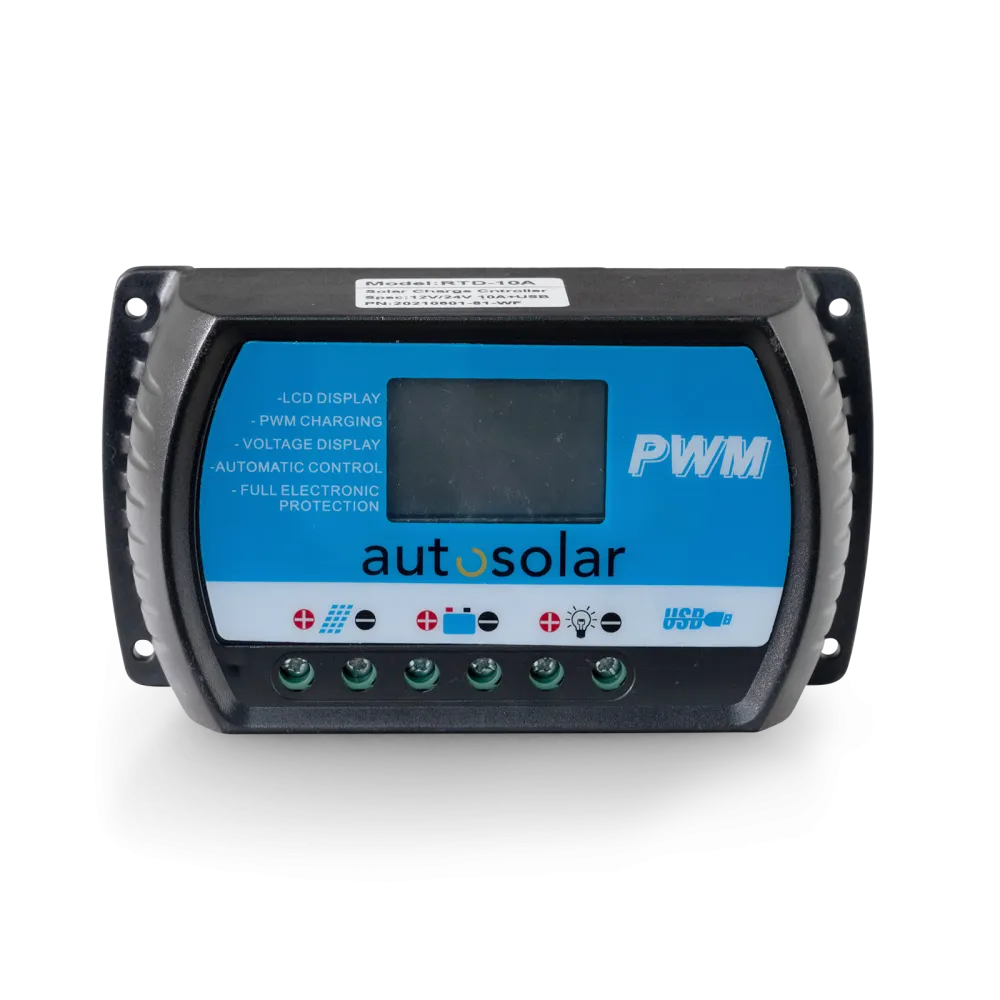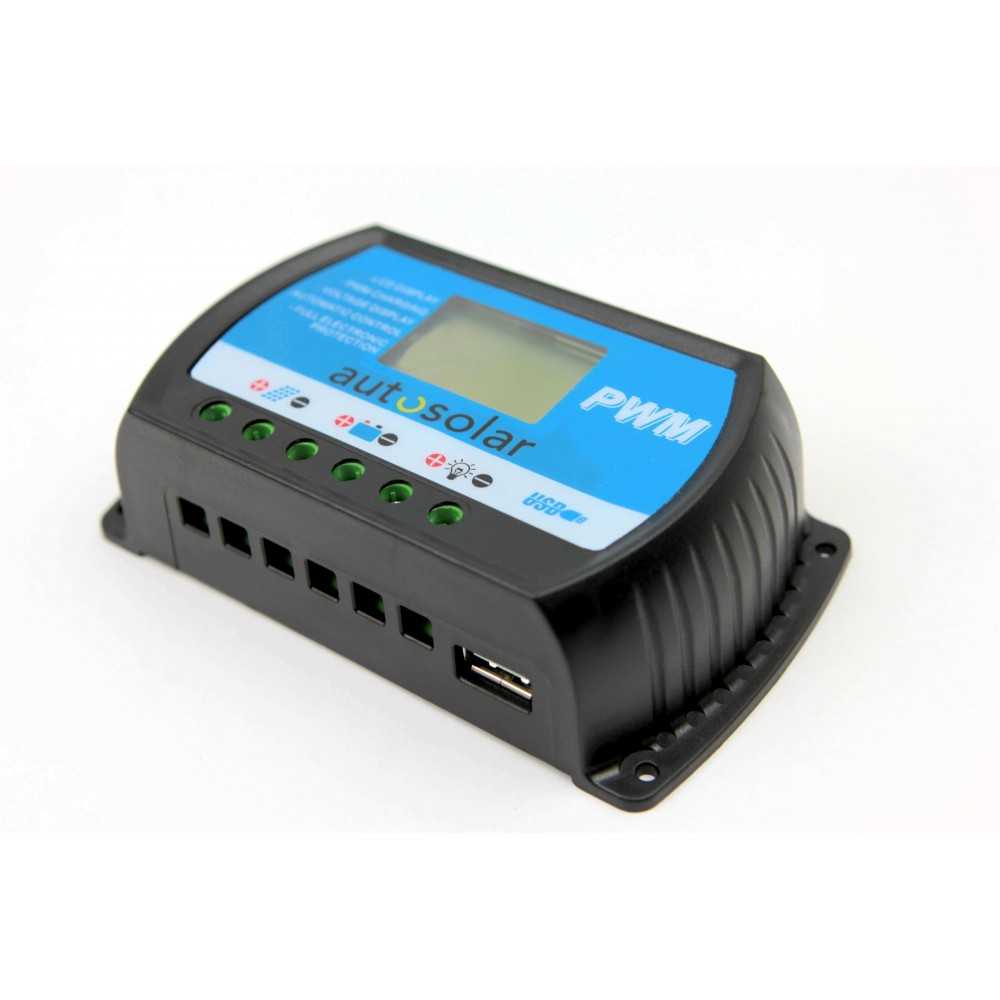





Secure Payments

FREE Delivery within 24h (from CHF 250.–)

Call Us: +41 44 999 01 01
The charge controller is connected between the solar module and the battery and controls the charging process so that the battery is always optimally charged.
The current operating status is determined by a resistor and the charging process is then optimized using the principle of pulse width modulation. ua , among other things, a very low voltage drop (maximum 0.24V) and internal current requirement (maximum 6 mA) is achieved.
Therefore, PWM charge controllers are significantly more effective than simple linear charge controllers.
The built-in microprocessor charges the battery gently, thereby guaranteeing a long service life for your solar batteries.
The charge status and charging via the solar module can be seen on the LEDs. The built-in undervoltage protection prevents the battery from being discharged too much.
Overcharging of the batteries is prevented because the charge controller ends the charging process when full capacity is reached.
Suitable for acid, AGM and gel batteries . The integrated microprocessor controls the switching thresholds of the charging process precisely and temperature-stable.
Up to 140 watt module power suitable for 12V systems, up to 280 watt module power for 24 volt systems.
Der einfacher PWM Laderegler kann die Spannung des Solarmoduls regeln. Beim MPPT-Laderegler ist der Vorteil, dass dieser der Kennlinie des Solarmoduls besser folgen kann. Zusätzlich kann der MPPT-Laderegler Spannung und Strom regulieren. Diese Vorteile führen zu einem Leistungsgewinn von bis zu 30%.
Das PWM 10A Gehäuse hat einen IP 20 Schutz. Dies liegt daran, das der Laderegler unten Öffnungen für die Kabeleinführungen hat.
Solange der Laderegler genügend Platz im geschlossenen Gehäuse hat und die Luft etwas zirkulieren oder das Gehäuse wärme ableiten kann, ist das kein Problem.